History
Welford Road Cemetery has, like many of its Victorian contemporaries, its roots in the urbanisation of the industrial cities. Although burial grounds outside of parish churches were a consequence of the rise of the dissenting tradition from the 17th century onwards it was the rapid population growth of cities like Leicester during the industrial revolution and the social reform movement that responded to the problems caused by it that gave impetus to private and municipal cemeteries.
The early 19th century saw a number of private cemeteries established but social reformers like Edwin Chadwick, with his publication Practices of Internment in Towns which recommended the prohibition of burials inside towns and the creation of cemeteries by the state rather than by the church or for profit, led a movement for municipal solutions to the overcrowded and unhygienic town churchyards.
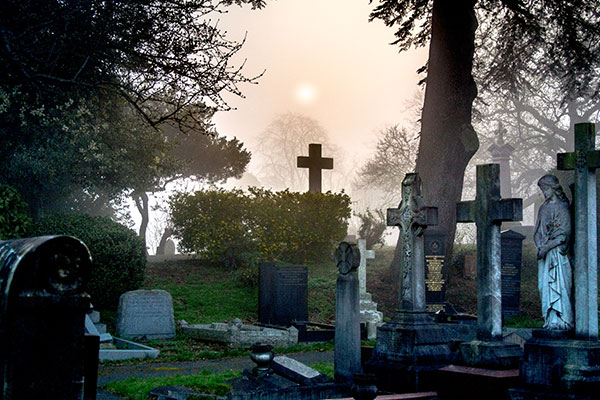
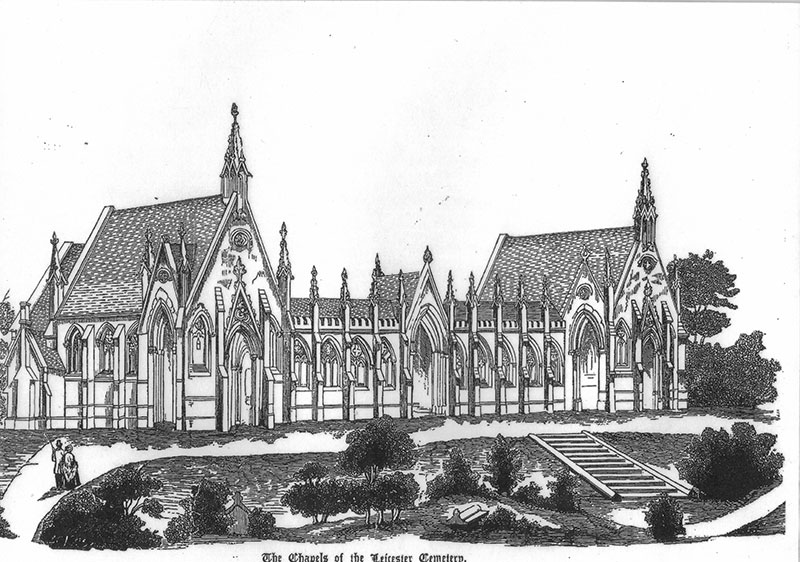
By the early 1840s Leicester’s 7 churchyards and 17 burial grounds could no longer cope. Complaints multiplied about the smell from them and in 1843 a Council appointed special committee concluded that most were actually, or nearly, full and in 1845 the Council decided that it would build a cemetery. Quarrels between the Liberal, Dissenter dominated Council and the mainly Tory, Church of England over the management of the cemetery caused the Dissenters to begin the process of setting up a private company and so the Leicester General Cemetery Company was formed on 22 September 1845 with Richard Harris as Chairman.
600 shares were raised at £10 each and in March 1846 an application was made to purchase 6.5 acres of land on Knighton Hill. Quarrels continued with the Anglicans over the valuation of the land and the scale of the project (only 200 burials a year were planned for) and voices urging conciliation between the two factions finally won with the passing of a motion on 17th March 1847 to apply for a bill to set up a General Cemetery for Leicester.
Disagreement now turned on the location for the cemetery. Several options were put forward including Knighton Hill, Park Close near Hinckley Road, Aylestone Road, Freake’s Ground and Humberstone Road. Knighton Hill won as it was owned by the Corporation, offered good views while still being relatively close to the town centre and its proximity to the Lunatic Asylum (now the University of Leicester) meant that it was unlikely to be appropriate for housing. It also had room for extension if needed.
Although the Lunatic Asylum raised objections that it would disturb the inmates, on the 22nd December 1847 the Council petitioned the House of Lords for leave to consider the Leicester Cemetery Bill. A public enquiry was successfully negotiated on 4th and 5th of February 1848 and the Leicester Cemetery Act gained Royal Assent on 5th May 1848.
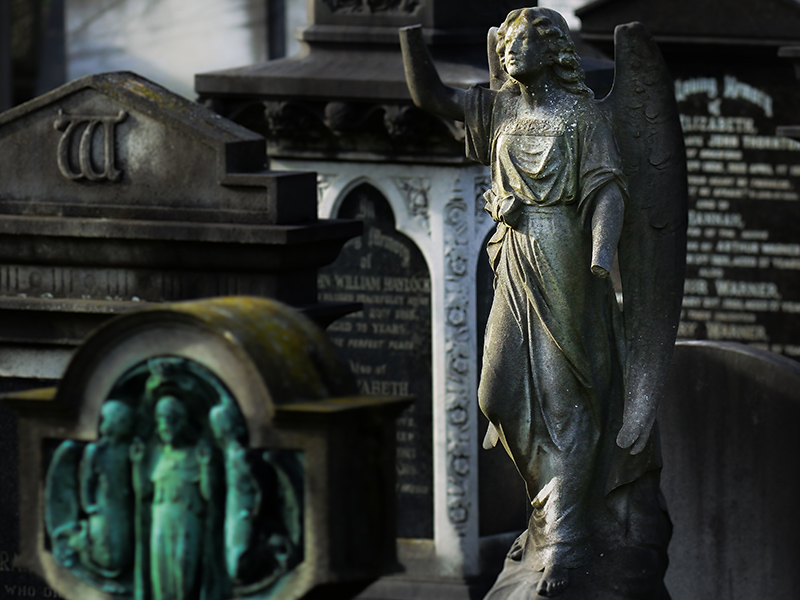
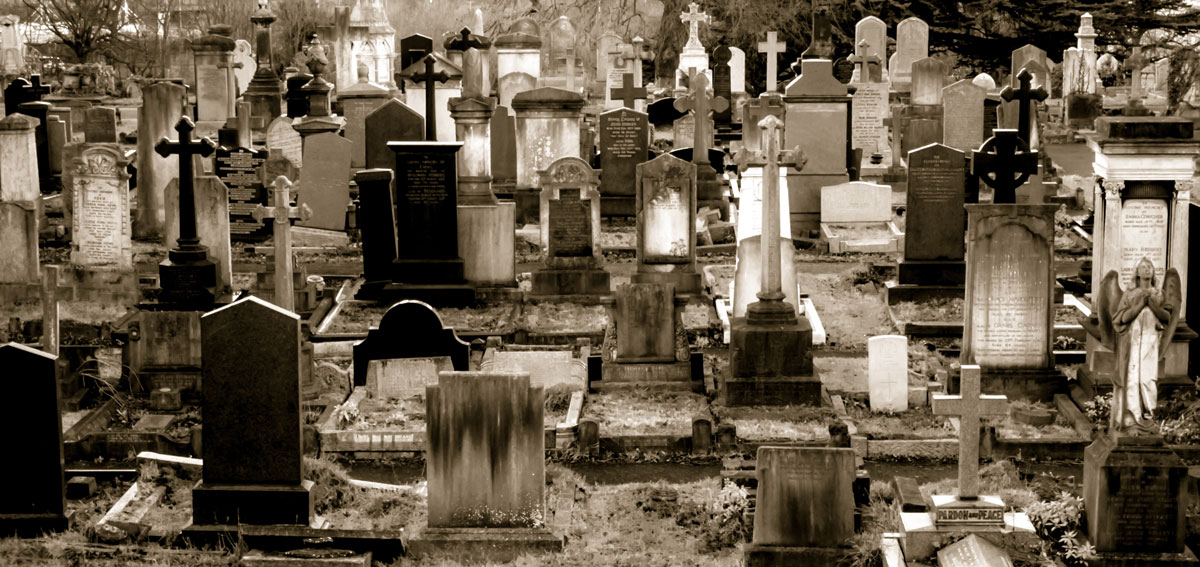
A public competition was launched to design the cemetery with 100 guineas or 5% of the project as prize with the winners announced later that year as the Gloucester firm of Hamilton and Medland. In January 1849 adverts were placed inviting tenders for the construction of two gothic chapels, a lodge on Welford Road entrance and a Gate House on Occupation Road. The cemetery was divided into two with a northern Anglican part and the southern half for dissenters.
The cemetery was opened by the Mayor, William Biggs, on 19th June 1849. Over 3,000 people turned out in pouring rain to see the Mayor bury a sealed bottle containing gold and silver coins under the foundation stone. The Anglican chapel was consecrated just over a year later on 4th September 1850 but not before the Council had overcome complaints that the Dissenters chapel was 10ft smaller than the Anglican one and the absconding of the architect Hamilton to America.
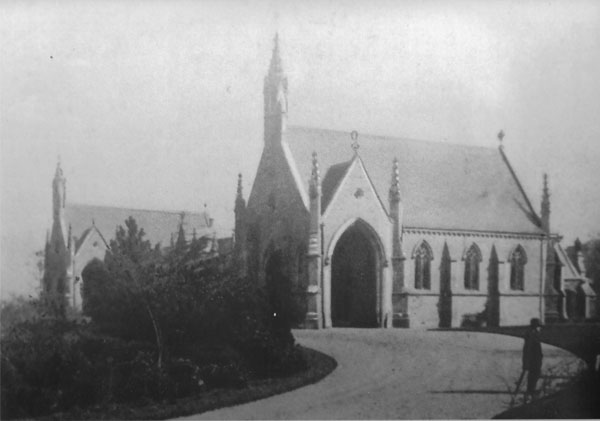
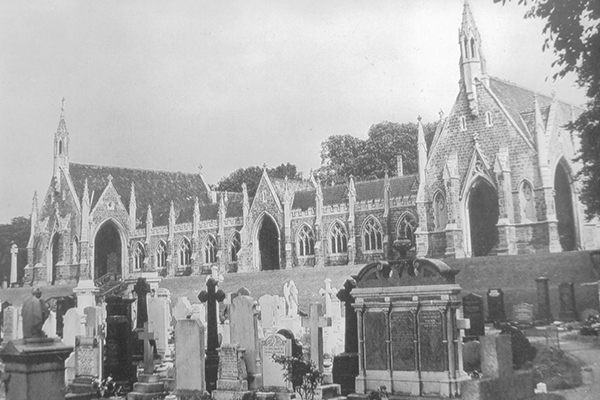
The first burial took place on 28th July when James Page was interred. In September 1850 application was made to the Board of Health for an order prohibiting internments in the town’s churchyards and burial grounds and by 1855 they were effectively closed. It was clear that extensions were needed to Welford Road and in 1854, 1859, 1860 and 1869 land was purchased between the cemetery and Lancaster Road. By 1869 the cemetery extended to the 31 acre site that you see today.
Between 1855 and 1902 the cemetery was in effect the only place for burials in the town. Belgrave cemetery opened to serve the population growth of that rapidly growing village in 1881 and in 1902 a second cemetery was opened for the town at Gilroes. Gilroes rapidly took over as the main cemetery, especially when crematoria were built there and although the war dead from the 5th Northern General hospital centred on the old asylum gave a fresh impetus, burials at Welford Road fell away between the World Wars.
A third cemetery opened at Saffron Hill in 1929 and by the 1958 the chapels were in such disrepair that they were demolished. The final plots were purchased in the 1970s and in the 1980s and early 1990s the cemetery suffered from vandalism. However, as the cemetery neared its 150th birthday in 1999 the Council and the newly formed Friends group began a process of regeneration that culminated in the award of a Heritage Lottery Grant in 2006. This enabled the building of the Visitor Centre and the renewal of roads and paths plus the installation of 100 plaques on the site of the chapel to commemorate notable people buried here.
The cemetery is still used for burials although there are only around a dozen internments a year in family plots now. It has become a popular green haven close to the heart of the modern city with many species of fauna and flora flourishing alongside visitors from Leicester, Britain and the world.
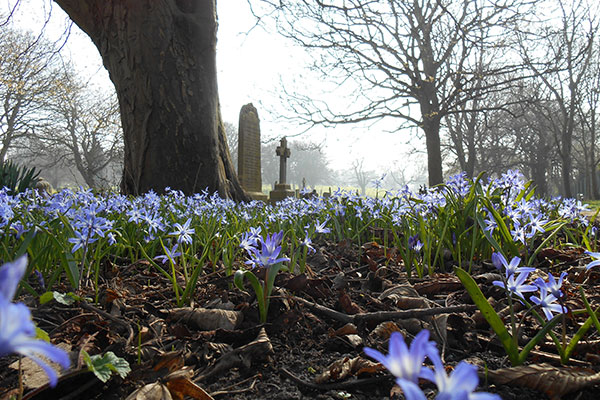
The Cathedral Headstones
In 2014 work was carried out by Leicester City Council on Leicester Cathedral. The work was part of an expensive £2.5 million scheme to transform the grounds that surround the Cathedral. The aim of the scheme was to create a green public space in Peacock Lane and St Martin’s. The work took place at the same time as the new £4 million Richard III visitor centre was being built. The renovation included new lawns, trees, flower beds, sculptures, a water feature and an outdoor arena for staging events. None of the burial plots at the Cathedral were disturbed.
However in order for work to take place they had to remove approx. 120 headstones located in the Cathedrals grounds. Sixty seven of these have now been permanently re-located to the Welford Road Cemetery, just behind the Visitors centre. The remainder either form part of the landscaping at the Cathedral or are located at Saffron Hill Cemetery. Some of those at Saffron Hill are from a previous landscaping project in the 1980’s. All of these relocated headstones have been photographed and documented on the Find a Grave website by The Friends of Welford Road Cemetery.
If you wish to see a PDF with the names of those commemorated on the Welford Road site please click on the link:
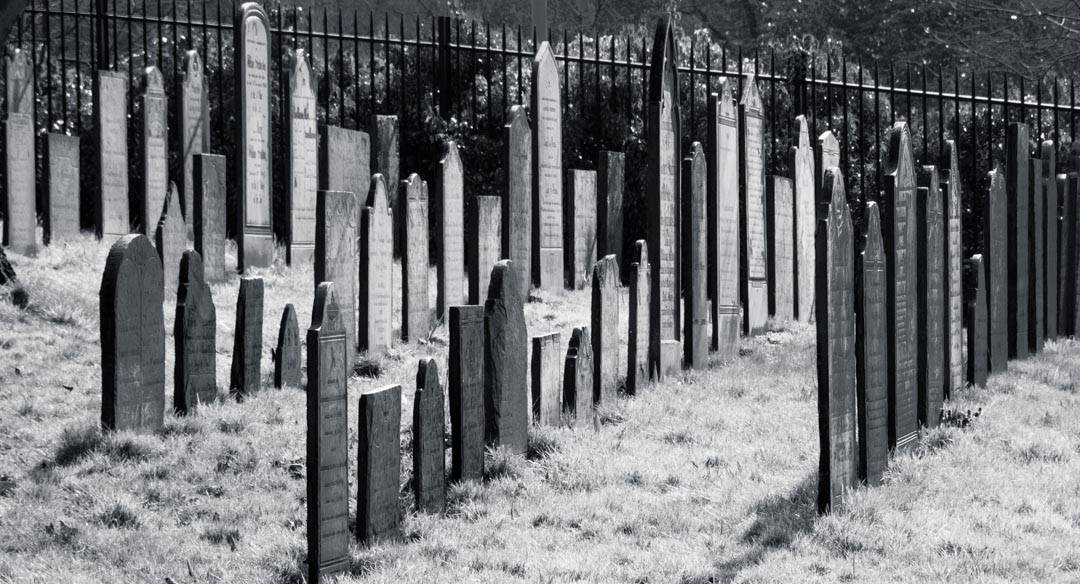
Cathedral Gravestones
The Friends of Welford Road Cemetery
In 1998 three members of the Leicester Victorian Society began to discuss the setting up of a Friends Group for Welford Road Cemetery. They sought and received support from Leicester City Council (LCC).
On 11th January 1999 a public meeting was held the result of which was the establishment of the new Friends of Welford Road Cemetery (FoWRC) with thirty people signing up to the new organisation and the formation of a Committee.
The aim of the FOWRC was:
“to promote for the benefit of the public, as an amenity, the conservation and restoration of the Welford Road Cemetery, Leicester, including its monuments, records, buildings, ecology and the natural beauty of its setting”.
Priorities included the involvement of the FoWRC in the impending Council led celebrations for the 150th anniversary of the opening of the Museum and the Cemetery.
The first year, 1999, was busy with various talks, guided walks, joining the National Federation of Cemetery Friends, the publication of the first newsletter, provision of records by LCC and Leicestershire and Rutland Family History Society (LRFHS) – all helped by a grant from the Victorian Society.
19th June saw the celebrations of the 150th anniversary of the opening of the Cemetery which included a visit from Richard and David Attenborough, costumed characters, tours and refreshments, and the burying of a time capsule. So many people attended that refreshments ran out. A concert followed at the Museum and there was a special service of thanksgiving at the Cathedral on Sunday 20th.
During 2003 to 2004 the Cemetery was closed for health and safety work, including the controversial topple-testing of monuments which resulted in many being laid down.
In December 2004 LCC’s Heritage Lottery Fund bid was successful which paid for the restoration of roads, paths and fences, and the building of the Visitor Centre, accommodation for the grounds staff, an interpretation area on the site of the former chapels, nesting boxes and the restoration of some important monuments.
Work began in 2005 and FOWRC and Leicester Historical and Archaeological Society worked together to decide on 100 names for the commemorative plaques. An open meeting in the Town Hall also took place to gather suggestions.
The Visitor Centre opened on 16th June 2006 and since then the FoWRC has continued to provide and develop its services – regular guided walks, Armistice Day Services, Services for the Belgian Soldiers interred at the Cemetery, ANZAC, Canada Day Services, RAF100 Service, Open Days, website development and helping visitors find the last resting place of their relatives. This work is complemented by the good relations that exist between LCC, which owns and manages the Cemetery, and the FoWRC.
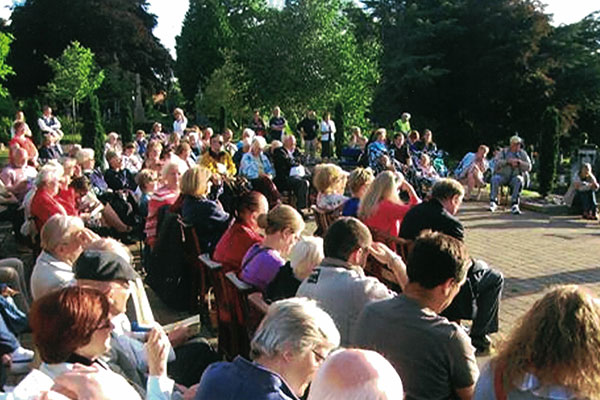

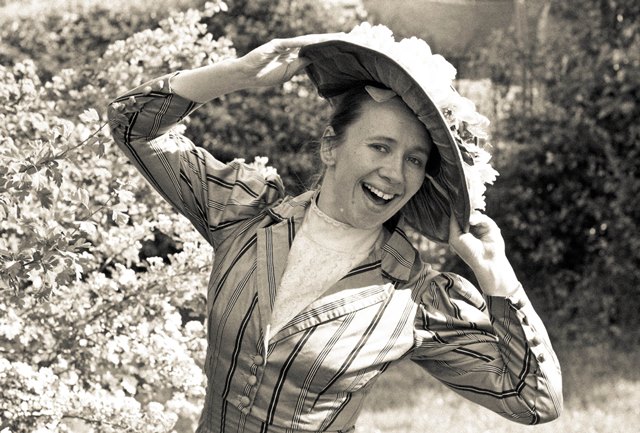
Want to become a member?